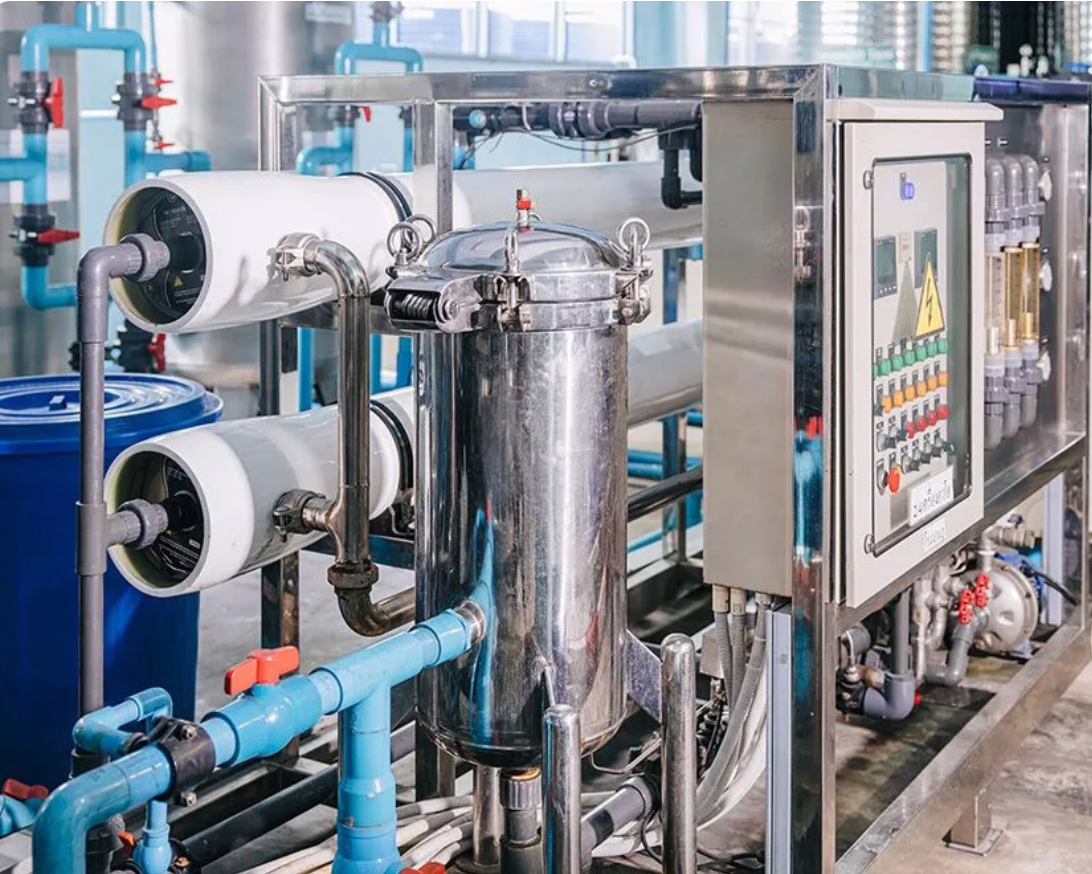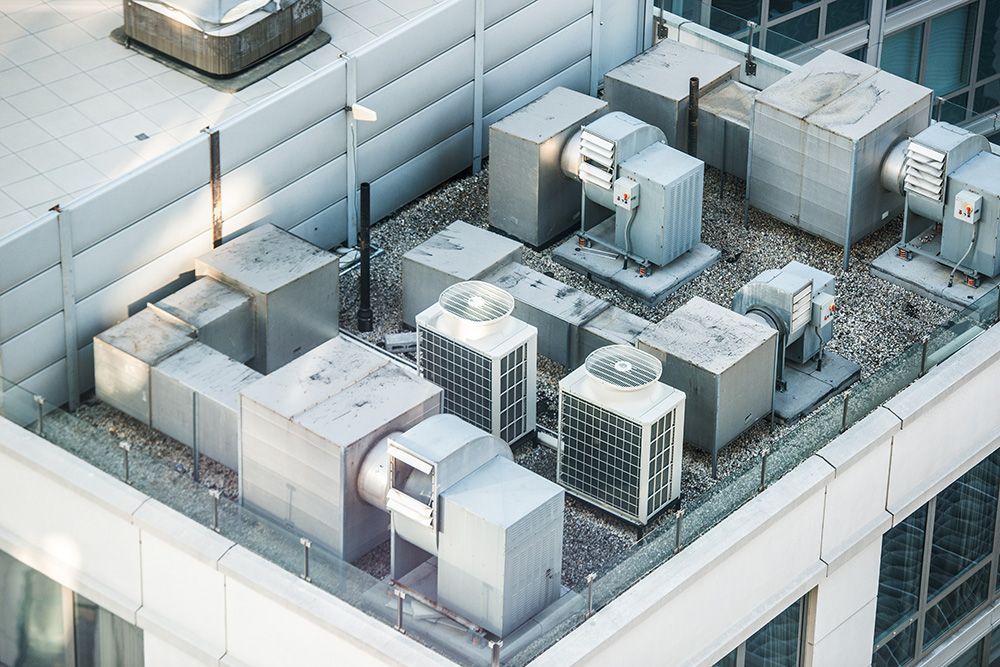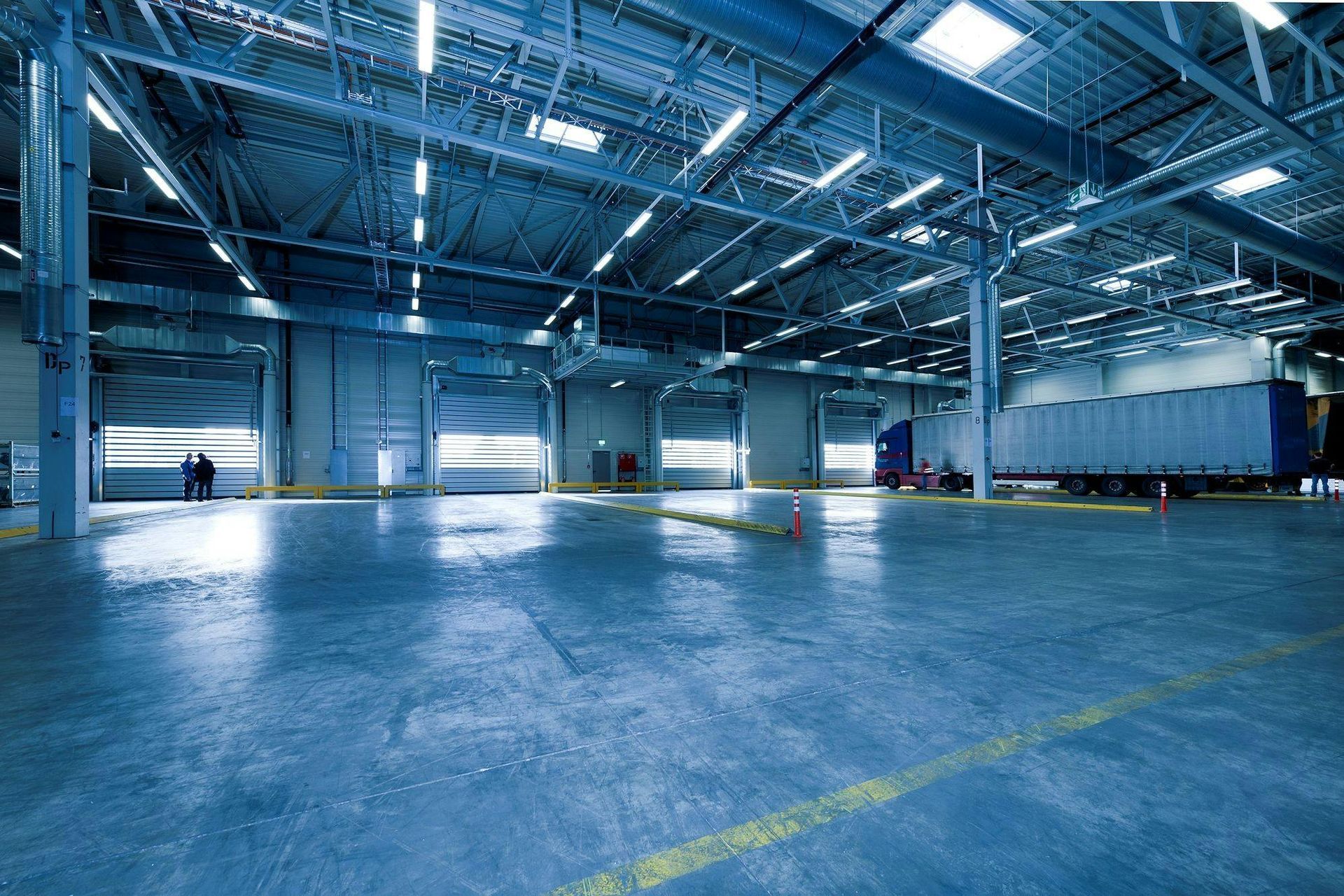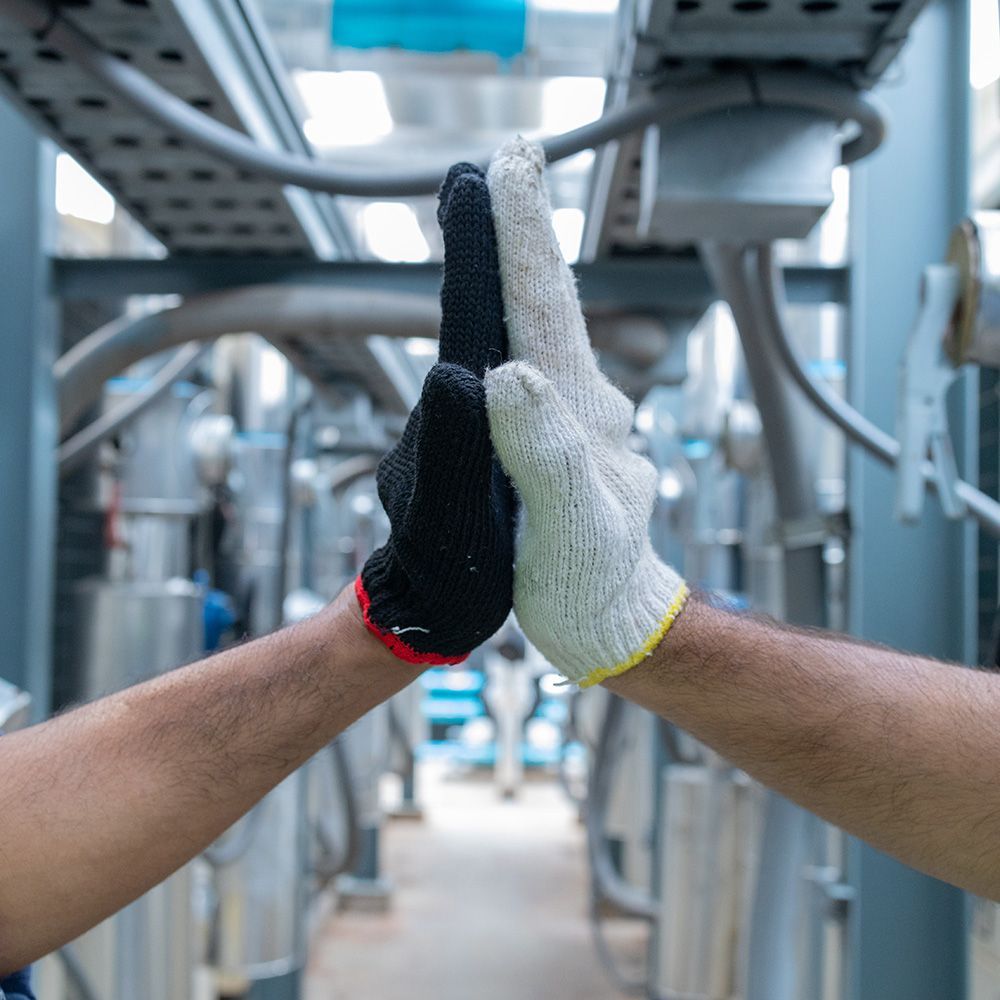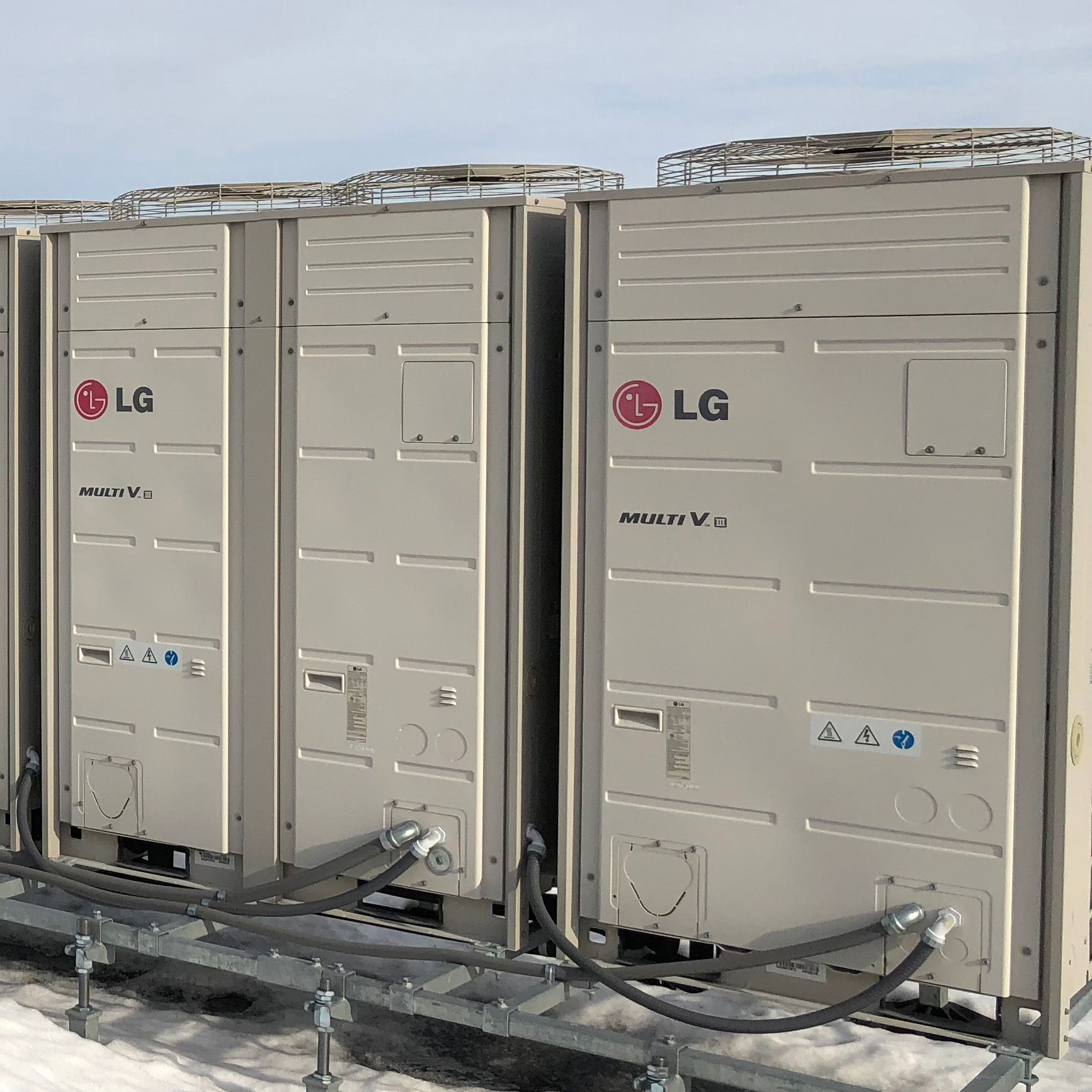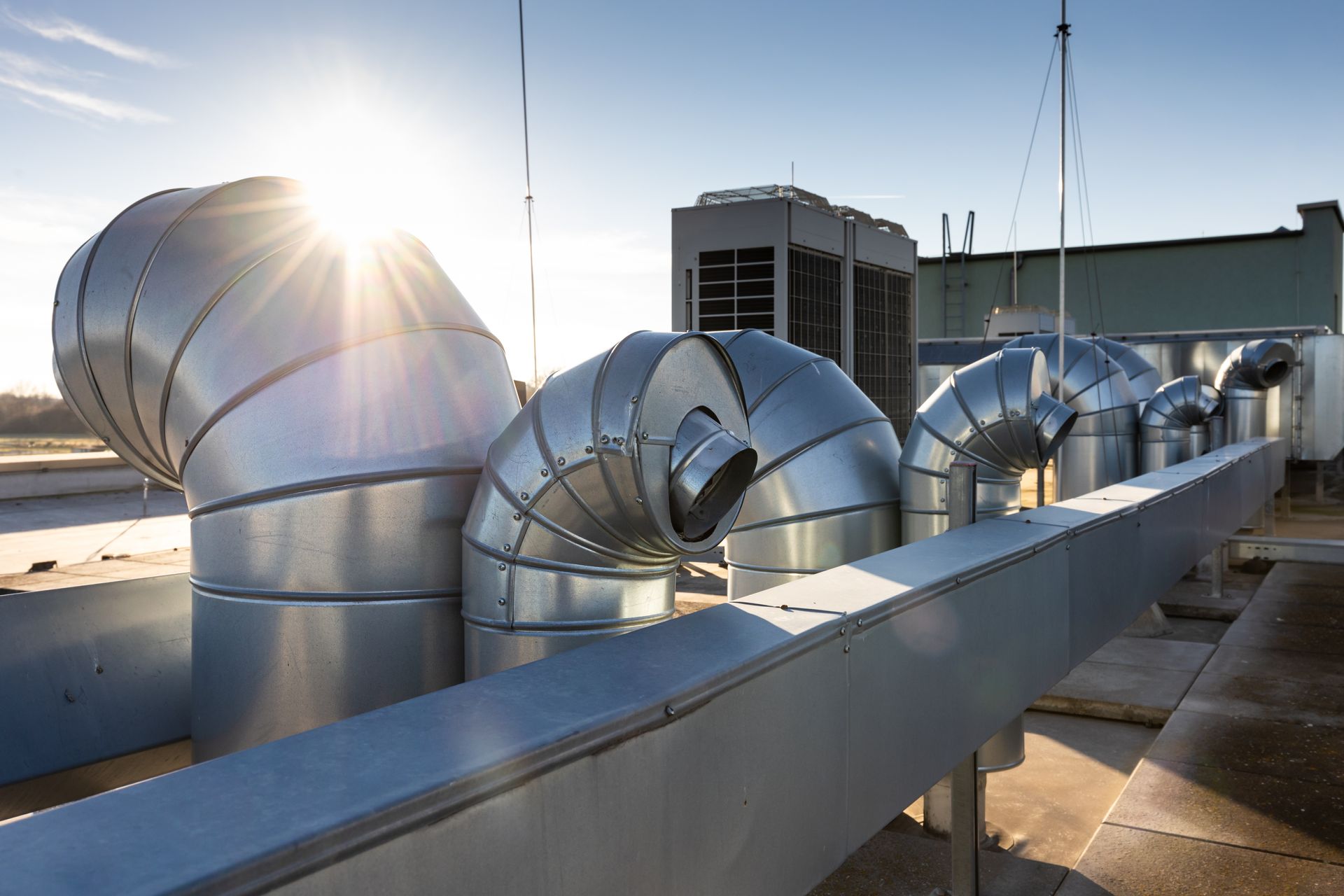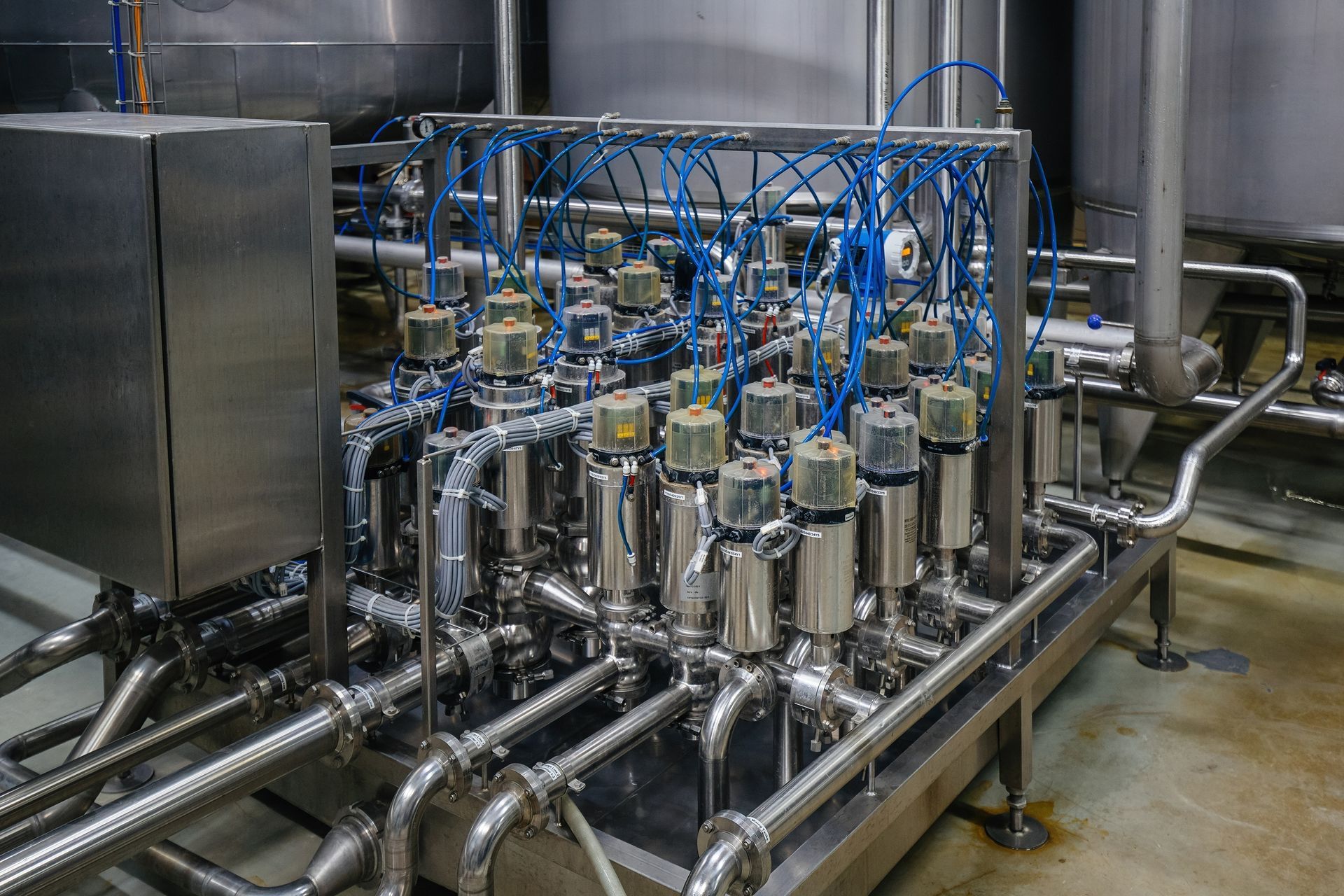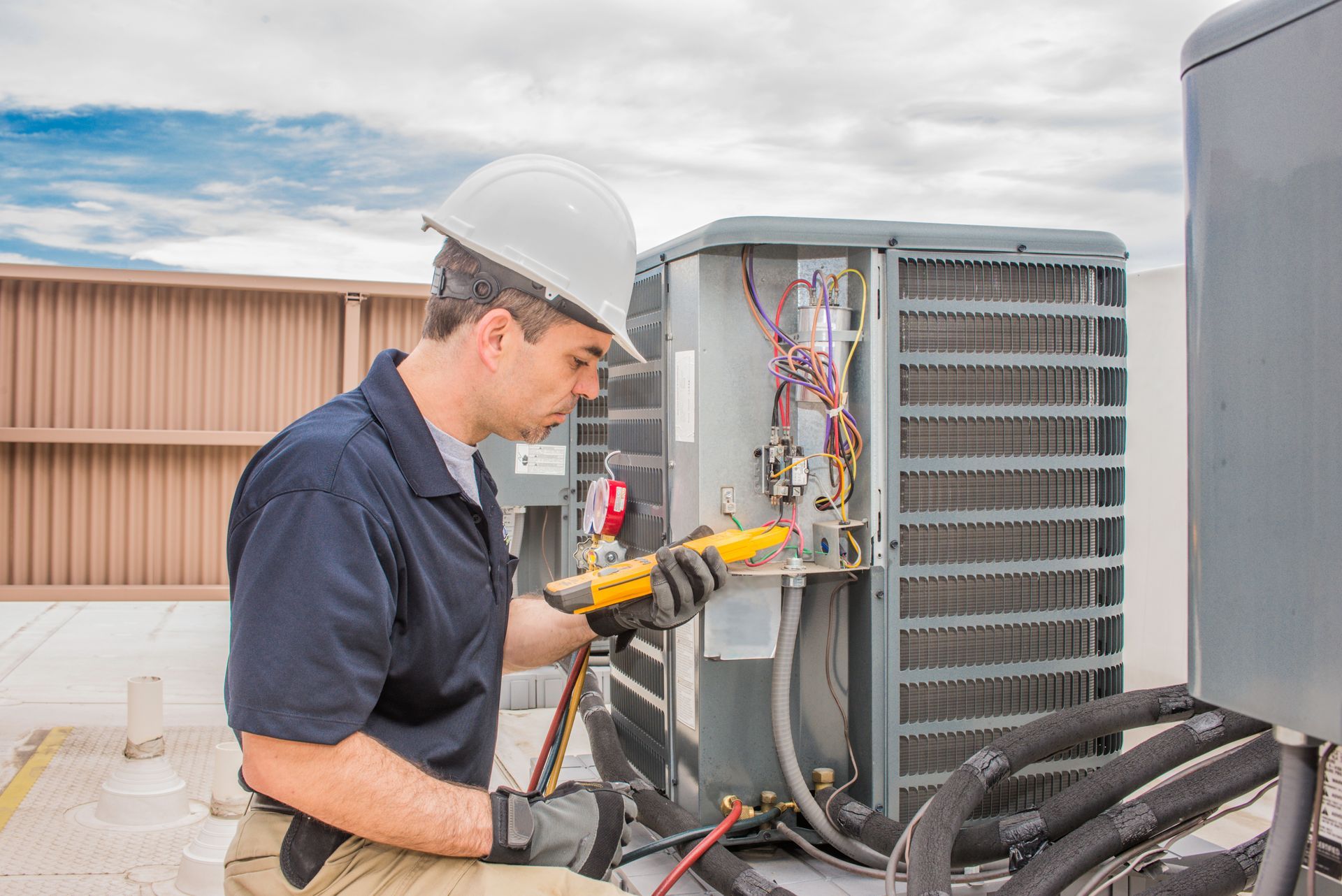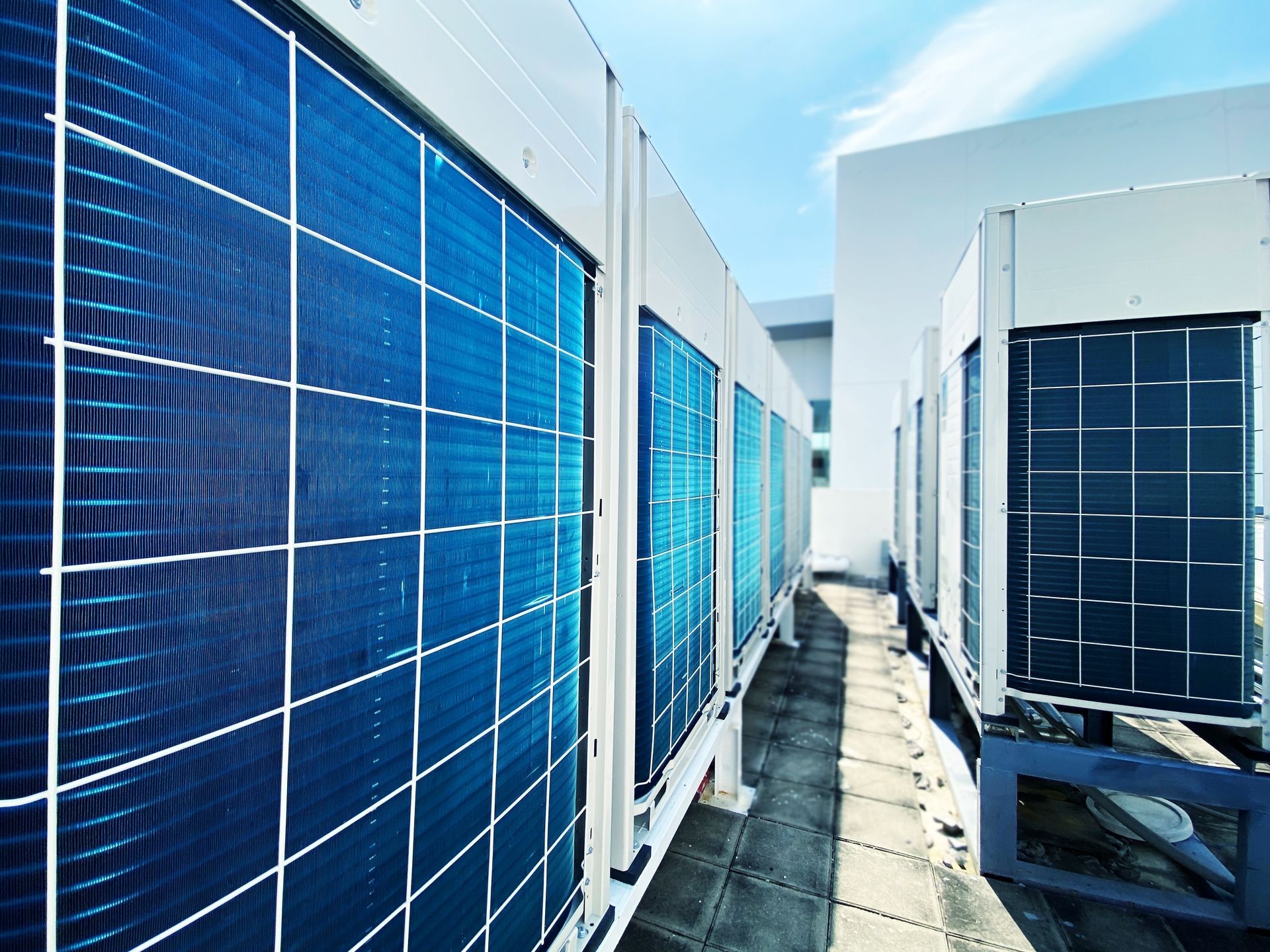Optimizing Your Building’s Climate Control: A Comprehensive Guide to Rooftop Units Installation with Anderson Mechanical KC
Unlocking Efficiency and Comfort: The Ultimate Guide to VRF Installation with Anderson Mechanical KC
In the dynamic world of heating, ventilation, and air conditioning (HVAC) systems, rooftop units (RTUs) have emerged as a pivotal solution for maintaining optimal indoor climates in commercial and industrial settings. Combining efficiency, versatility, and ease of installation, RTUs are a preferred choice for many businesses seeking reliable climate control. Anderson Mechanical KC stands at the forefront of this industry, offering expert rooftop unit installation services that promise enhanced performance, energy savings, and unparalleled comfort. This comprehensive guide delves into the essentials of rooftop units, the advantages of choosing Anderson Mechanical KC for installation, and how these systems can transform your building’s environment.
Understanding Rooftop Units: The Heart of Commercial HVAC Systems
Before exploring the specifics of rooftop unit installation, it’s essential to understand what rooftop units are, how they function, and why they are integral to modern HVAC systems.
What is a Rooftop Unit?
A Rooftop Unit (RTU) is a self-contained HVAC system installed on the roof of a building. Designed primarily for commercial and industrial applications, RTUs provide heating, cooling, ventilation, and air filtration from a single, consolidated unit. Their compact design and strategic placement make them an efficient solution for large-scale climate control needs.\
How Do Rooftop Units Work?
RTUs operate by drawing in outside air, conditioning it to the desired temperature, and distributing it throughout the building. The primary components of an RTU include:
- Compressor: Compresses the refrigerant, increasing its pressure and temperature.
- Condenser: Releases absorbed heat from the refrigerant to the outside environment.
- Evaporator: Absorbs heat from the incoming air, cooling it to the desired temperature.
- Fan: Circulates the conditioned air into the building and exhausts stale air outside.
- Filters: Remove dust, pollutants, and other particulates from the incoming air, ensuring clean indoor environments.
By integrating these components into a single unit, RTUs streamline the HVAC process, making them highly efficient and effective.
Components of a Rooftop Unit
A typical rooftop unit comprises several key components that work in harmony to deliver optimal climate control:
- Air Handling Unit (AHU): Manages the flow and quality of air within the building.
- Heating and Cooling Coils: Facilitate the transfer of heat between the air and the refrigerant.
- Ductwork: Distributes conditioned air throughout the building and returns stale air back to the unit.
- Control Systems: Include thermostats and sensors that regulate the operation of the RTU based on real-time demand.
- Ventilation Components: Ensure adequate fresh air intake and exhaust, maintaining indoor air quality.
The Advantages of Rooftop Unit Installation
Investing in a rooftop unit brings a myriad of benefits that enhance the efficiency, comfort, and sustainability of your building’s climate control system. Here’s why RTU installation is a strategic choice for both commercial and industrial spaces.
1. Energy Efficiency
Rooftop units are engineered for optimal energy efficiency. By consolidating heating, cooling, and ventilation into a single unit, RTUs minimize energy consumption compared to multiple, separate systems. Advanced technologies such as variable speed fans and energy recovery ventilators further enhance their efficiency, leading to significant reductions in utility costs and a lower environmental footprint.
2. Space-Saving Design
One of the most compelling advantages of RTUs is their compact, space-saving design. Installed on the roof, RTUs free up valuable interior space that would otherwise be occupied by bulky HVAC equipment. This is particularly beneficial in buildings where interior space is at a premium, allowing for more efficient use of floor areas.
3. Simplified Installation and Maintenance
Rooftop units offer streamlined installation processes, reducing the complexity and time associated with traditional HVAC system setups. Their modular design facilitates easier maintenance and repairs, as components can be accessed and serviced without disrupting the building’s operations. Regular maintenance by professionals ensures that RTUs operate at peak performance, extending their lifespan and reliability.
4. Enhanced Indoor Air Quality
RTUs are equipped with advanced filtration systems that remove contaminants, allergens, and pollutants from incoming air. By ensuring a constant supply of clean, fresh air, RTUs contribute to healthier indoor environments, reducing the risk of respiratory issues and enhancing overall occupant well-being. Additionally, proper ventilation regulated by RTUs helps in maintaining optimal humidity levels, preventing mold growth and other moisture-related problems.
5. Scalability and Flexibility
Rooftop units are highly adaptable to various building sizes and configurations. Whether it’s a small office building or a sprawling industrial complex, RTUs can be customized and scaled to meet specific climate control needs. Their modular nature allows for easy expansion, accommodating future growth and changing requirements without extensive modifications.
6. Cost-Effective Solution
The combination of energy efficiency, space-saving design, and simplified installation makes RTUs a cost-effective HVAC solution. Reduced energy consumption translates to lower operational costs, while the streamlined installation process minimizes initial setup expenses. Additionally, the longevity and reliability of RTUs reduce the need for frequent replacements and repairs, providing long-term financial benefits.
7. Quiet Operation
Modern rooftop units are designed to operate with minimal noise, ensuring a quiet and comfortable indoor environment. Noise-reduction features and insulated components prevent the transmission of operational sounds into the building, making RTUs ideal for environments where silence is essential, such as offices, schools, and healthcare facilities.
Why Choose Anderson Mechanical KC for Rooftop Units Installation?
Selecting the right service provider is crucial to ensuring the successful installation and operation of your rooftop unit. Anderson Mechanical KC distinguishes itself in the HVAC industry through its unwavering commitment to quality, expertise, and customer satisfaction. Here’s why Anderson Mechanical KC should be your preferred choice for RTU installation.
Expertise and Experience
With years of experience in the HVAC sector, Anderson Mechanical KC boasts a team of highly trained professionals adept at handling the complexities of rooftop units. Their extensive knowledge ensures that every installation is executed with precision, adhering to industry standards and best practices. Whether it's a new installation or a retrofit, their expertise guarantees optimal system performance and reliability.
Customized Solutions
Recognizing that each building has unique requirements, Anderson Mechanical KC offers tailored RTU solutions designed to meet specific climate control needs. From system design and component selection to installation and configuration, their personalized approach ensures that the installed RTU aligns perfectly with the client's objectives and building specifications. This bespoke service enhances system efficiency and occupant comfort.
Quality Assurance
Quality is the cornerstone of Anderson Mechanical KC’s operations. They utilize top-of-the-line rooftop unit components from reputable manufacturers, ensuring reliability and durability. Rigorous quality checks are conducted at every stage of the installation process, safeguarding the system’s performance and longevity. This commitment to quality ensures that clients receive HVAC solutions that stand the test of time.
Comprehensive Support
Anderson Mechanical KC provides end-to-end support, from initial consultation and system design to installation and ongoing maintenance. Their comprehensive service approach ensures that clients receive continuous assistance, optimizing system performance and addressing any issues promptly. This holistic support enhances client satisfaction and system reliability.
Competitive Pricing
Understanding the importance of cost-effectiveness, Anderson Mechanical KC offers competitive pricing without compromising on quality. Their transparent pricing model ensures that clients receive value for their investment, making RTU installation an affordable and worthwhile endeavor. Additionally, they offer financing options and energy-efficient solutions that further enhance cost savings.
Timely Execution
Time is often of the essence in HVAC installations, and Anderson Mechanical KC excels in delivering timely solutions. Their streamlined processes and efficient project management ensure that RTU installations are completed within the stipulated timeframe, minimizing disruptions to the client’s operations or daily life. Punctuality and reliability are hallmarks of their service delivery.
Positive Customer Reviews
A testament to their excellence, Anderson Mechanical KC boasts a portfolio of satisfied clients who have benefited from their rooftop unit installation services. Positive testimonials highlight their professionalism, technical prowess, and dedication to customer satisfaction, reinforcing their reputation as a trusted HVAC service provider.
The Rooftop Units Installation Process with Anderson Mechanical KC
Embarking on a rooftop unit installation project with Anderson Mechanical KC involves several key steps, each meticulously planned and executed to ensure a seamless and successful outcome. Here’s an overview of the typical RTU installation process:
1. Initial Consultation and Assessment
The journey begins with an initial consultation where Anderson Mechanical KC’s experts assess the client’s heating and cooling needs. This involves evaluating the building’s layout, existing HVAC infrastructure, and specific requirements to determine the most suitable RTU configuration. Factors such as building size, occupancy levels, and climate conditions are considered to tailor the solution effectively.
2. System Design and Planning
Based on the assessment, a customized RTU system design is developed. This includes selecting the appropriate unit size, determining ductwork routes, and planning the control systems. Advanced software tools may be utilized to model the system’s performance, ensuring optimal efficiency and coverage. The design phase also involves addressing any structural or architectural considerations to integrate the RTU seamlessly into the building’s design.
3. Equipment Selection and Procurement
Anderson Mechanical KC sources high-quality rooftop units from reputable manufacturers, ensuring that the system’s performance aligns with industry standards and client expectations. Attention is paid to selecting equipment that offers reliability, efficiency, and compatibility with the building’s requirements. They also consider energy-efficient models and advanced features that enhance system performance and sustainability.
4. Installation Preparation
Prior to installation, the team prepares the site by coordinating with the client to schedule the work, securing necessary permits, and ensuring that all components are ready for deployment. This phase may also involve addressing any structural or infrastructural modifications required to accommodate the RTU, such as reinforcing roof structures or upgrading electrical systems.
5. Installation of the Rooftop Unit
The installation process commences with mounting the rooftop unit securely on the building’s roof. Precision is paramount to ensure that the unit is positioned for optimal performance and easy maintenance access. The team then installs the ductwork, ensuring airtight connections to prevent air leaks and maximize efficiency. Electrical connections are established to integrate the RTU with the building’s power supply and control systems.
6. Refrigerant Piping and Electrical Connections
Precision is essential in laying out the refrigerant piping and electrical connections, as they form the backbone of the RTU system. Proper insulation and sealing are crucial to prevent leaks and maintain system efficiency. Simultaneously, electrical connections are established to integrate the RTU with the building’s power supply and control mechanisms, ensuring seamless operation and control.
7. System Integration and Testing
Once all components are in place, the RTU system is integrated and thoroughly tested. This involves verifying the functionality of each component, calibrating temperature controls, and ensuring seamless communication between the RTU and the building’s control systems. Comprehensive testing guarantees that the system operates at peak performance, delivering the desired heating, cooling, and ventilation.
8. Client Training and Handover
Anderson Mechanical KC ensures that clients are well-versed in operating and maintaining their new rooftop unit. Training sessions cover the use of control interfaces, routine maintenance practices, and troubleshooting procedures. The handover process is conducted with meticulous attention to detail, ensuring that clients are fully equipped to manage their HVAC system effectively.
9. Ongoing Maintenance and Support
Post-installation, Anderson Mechanical KC offers ongoing maintenance services to uphold the RTU system’s efficiency and longevity. Regular inspections, cleaning, and prompt repairs are part of their commitment to sustained performance and client satisfaction. Their proactive maintenance approach helps in identifying and addressing potential issues before they escalate, ensuring uninterrupted climate control.
Applications of Rooftop Units: Versatility Across Various Sectors
Rooftop units are renowned for their versatility, making them suitable for a wide range of applications across different sectors. Here’s a glimpse into where RTU installations can make a significant impact:
1. Commercial Buildings
From office complexes and retail spaces to hotels and restaurants, rooftop units cater to the diverse climate control needs of commercial establishments. Their ability to handle multiple zones with varying temperature requirements makes them ideal for businesses seeking both efficiency and flexibility. RTUs ensure comfortable environments for employees and customers alike, enhancing productivity and customer satisfaction.
2. Industrial Facilities
Manufacturing plants, warehouses, and other industrial settings often have unique HVAC requirements due to their size and operational demands. Rooftop units offer scalable solutions that can adapt to the dynamic needs of industrial spaces, ensuring optimal indoor conditions and process efficiency. Their robust design and high-capacity performance make RTUs a reliable choice for demanding industrial applications.
3. Educational Institutions
Schools, colleges, and universities require robust HVAC solutions to accommodate varying occupancy levels and diverse space usages. Rooftop units provide the flexibility and efficiency needed to create comfortable learning and working environments. Proper climate control enhances student performance, faculty productivity, and overall campus comfort.
4. Healthcare Facilities
Hospitals, clinics, and other healthcare facilities demand precise climate control to ensure patient comfort and maintain sterile environments. Rooftop units offer the necessary reliability and control, making them a preferred choice in the healthcare sector. Their advanced filtration systems contribute to maintaining high indoor air quality, crucial for patient health and safety.
5. Multi-Family Residential Buildings
Apartment complexes and multi-unit residential buildings benefit from rooftop units through personalized climate settings and energy savings. RTUs provide quiet, efficient, and reliable heating and cooling solutions that enhance the living experience for residents. Their space-saving design is particularly advantageous in high-density residential areas.
Maximizing the Benefits of Rooftop Units: Tips and Best Practices
To fully harness the advantages of a rooftop unit, it’s essential to adhere to certain best practices and maintenance tips. Here are some recommendations to ensure your RTU installation continues to deliver optimal performance:
1. Regular Maintenance
Scheduled maintenance is crucial for the longevity and efficiency of your rooftop unit. Engage Anderson Mechanical KC for routine inspections, cleaning, and component checks to prevent potential issues and maintain system integrity. Regular maintenance helps in identifying and addressing minor problems before they escalate, ensuring uninterrupted climate control.
2. Optimal System Design
Ensure that the RTU system is designed to match the specific needs of your building. Factors such as insulation, window placement, and occupancy levels should be considered to optimize system performance and energy efficiency. A well-designed system reduces energy consumption and enhances indoor comfort.
3. Proper Installation
The success of a rooftop unit hinges on meticulous installation. Partnering with experienced professionals like Anderson Mechanical KC ensures that all components are correctly installed, reducing the risk of future malfunctions and maximizing efficiency. Proper installation also ensures compliance with local building codes and safety standards.
4. Utilize Advanced Controls
Modern rooftop units come equipped with sophisticated control interfaces that allow for precise temperature management and energy monitoring. Leveraging these controls can enhance system performance and provide valuable insights into energy usage patterns. Implementing smart thermostats and automated controls can further optimize energy efficiency and occupant comfort.
5. Address Issues Promptly
Any signs of system irregularities, such as unusual noises, inconsistent temperatures, or error alerts, should be addressed immediately. Prompt attention to these issues can prevent minor problems from escalating into costly repairs. Regular monitoring and swift response to issues ensure that the RTU operates smoothly and efficiently.
6. Educate Occupants
Educating the occupants of your building on the proper use of the rooftop unit can significantly impact its efficiency. Simple practices, such as adjusting thermostat settings appropriately and ensuring vents are not obstructed, contribute to optimal performance. Informed occupants can make better use of the RTU’s features, enhancing overall energy savings and comfort.
7. Upgrade When Necessary
As technology advances, newer rooftop units offer enhanced features and greater efficiency. Periodically assess the performance of your RTU and consider upgrading to newer models when necessary. Upgrades can lead to significant energy savings, improved performance, and extended system lifespan.
The Future of HVAC: Embracing Advanced Rooftop Unit Technologies
As the demand for energy-efficient and flexible HVAC solutions continues to rise, rooftop unit technologies are poised to play a pivotal role in shaping the future of indoor climate control. Innovations in RTU systems promise even greater efficiency, sustainability, and ease of use.
Integration with Smart Building Technologies
The integration of rooftop units with smart building technologies is set to revolutionize HVAC management. By leveraging Internet of Things (IoT) devices and advanced analytics, RTUs can offer predictive maintenance, real-time energy monitoring, and adaptive climate control. These smart features enhance system efficiency and user-friendliness, providing building managers with comprehensive control and insights into their HVAC operations.
Sustainable Refrigerants and Energy Sources
Environmental considerations are driving the adoption of sustainable refrigerants and renewable energy sources in rooftop units. Utilizing eco-friendly refrigerants with lower global warming potentials (GWPs) aligns with global efforts to reduce greenhouse gas emissions and combat climate change. Additionally, integrating rooftop units with solar panels and other renewable energy sources can further enhance their sustainability and reduce reliance on conventional energy grids.
Enhanced Modular and Scalable Designs
Future rooftop units are expected to feature even more modular and scalable designs, facilitating easier expansions and retrofits. This flexibility will make RTUs accessible to a broader range of applications, from small commercial buildings to large-scale industrial complexes. Modular designs allow for seamless integration with existing systems, providing scalable solutions that can adapt to changing climate control needs.
Improved Energy Recovery Systems
Advancements in energy recovery technologies will enable rooftop units to reclaim and reuse waste heat, further boosting their energy efficiency. These systems can capture excess heat generated during operation and redirect it for other uses, such as preheating incoming air or providing hot water. Energy recovery systems reduce overall energy consumption, enhancing the sustainability and cost-effectiveness of RTUs.
Advanced Filtration and Air Quality Technologies
Future RTUs will incorporate advanced filtration and air quality technologies to ensure healthier indoor environments. High-efficiency particulate air (HEPA) filters, ultraviolet (UV) germicidal irradiation, and advanced air purification systems will become standard features, providing superior protection against airborne contaminants and improving occupant health and comfort.
Conclusion: Elevate Your Building’s Climate Control with Anderson Mechanical KC’s Rooftop Units Installation Services
In the pursuit of superior indoor climate control, rooftop units stand out as essential components that offer unmatched efficiency, reliability, and comfort. Anderson Mechanical KC, with its expertise in rooftop unit installation, provides a pathway to harnessing these benefits, transforming your building into an environment that prioritizes both occupant satisfaction and energy sustainability.
Whether you’re managing a commercial establishment seeking to optimize operational costs or an industrial facility aiming for reliable and efficient climate control, rooftop units installed by Anderson Mechanical KC can be the solution you need. Their commitment to quality, personalized service, and ongoing support ensures that your investment in RTU technology yields long-term rewards.
Embrace the future of HVAC with Anderson Mechanical KC’s rooftop unit installation services and experience a harmonious blend of innovation, efficiency, and comfort. Reach out today to explore how a rooftop unit can revolutionize your building’s indoor environment.
